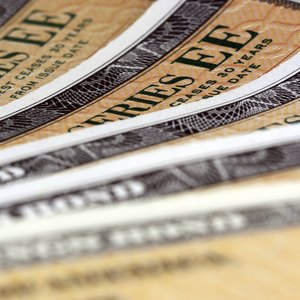
The bond discount rate is the interest used to price bonds via present valuation calculations. This should not be confused with the bond's stated coupon rate, which is the basis for making coupon payments to the bondholder. The discount rate also is referred to as the bond's yield to maturity, and is the return required to entice an investor to invest in the bond, given its various implicit risks. In this way, the discount rate is a measure of risk, and also of expected returns; it is the market's view of the bond's credit, default and issuer-specific risks.
Read More: What Type of People Would Invest in Bonds?
Bond Discount vs Coupon Rate
If the bond's coupon rate, which is stated in the initial loan agreement and may be fixed or floating, is equal to the bond's yield to maturity, the bond trades at its par value. If the yield to maturity is higher than the bond's coupon rate, the bond trades a a discount. The discounted bond price reflects the opportunity cost associated with investing in the bond.
Similar bonds trading on the market have higher yields, making the bond less valuable. If the yield to maturity is lower than the coupon rate, the bond trades at a premium, as an investor would be willing to pay more for the higher coupon rate, which is higher than is what the market is offering.
Bond Price Formula
The bond's value is equal to the present value of the interest payments it generates, and of the repayment of principal. The discount rate is used to create a present value factor, which is applied to the payment of streams. For example, if a $100 bond is a zero-coupon, one-year bond paying 10 percent interest, the only payment made is the repayment of the $100 principal plus $10 in interest. This occurs at the end of year 1.
The present value formula is: 1/(1+r)^n, where r equals the discount rate (10 percent) and n equals the time period (1). Therefore, the present value factor equals 1/(1+ 0.10)^1, or 0.9091. The present value is therefore equal to 0.9091 multiplied by $110, or $100.
Along with doing a manual calculation, you can use a bond price calculator online to save some work and determine the value quickly.
Read More: How to Calculate the Expected Return on Bonds
Estimating the Discount Rate
If two identical companies each issue the same type of bond with identical terms, and one company offers an interest rate of 10 percent, and the other 9 percent, a rational investor will always select the 10 percent bonds, because he can earn a higher return while assuming the same underlying risks. This is the premise under which bond discount rates are found, using market data.
Find bond issuers that are as comparable as possible to your subject company, in terms of profitability, growth, line of business, size and financial health. This provides you with a baseline for estimating your discount rate. Specialized financial data providers and debt ratings agencies compile this data, as do the exchanges on which trade corporate debt securities.
Considerations for Risk-Adjusted Returns
As a bond approaches maturity, its trading price converges with its par value, usually a multiple of 100 or 1,000. Bond investors earn returns from coupon payments and, if the bond was purchased at a discount, the increase in price as maturity approaches. Differences in discount rates reveal how the market views the bond's risk-adjusted returns.
Bonds are subject to a wide variety of risks: market risks that affect most bonds similarly, and issuer-specific risks stemming from the company's operations and bond's structure. Interest rate risk reflects the likelihood that changes in interest rates will affect yields. Credit and default risk stem from the company's risk of missing interest payments or becoming insolvent. These risks are difficult to quantify, and therefore constantly shift as they, and investors' perceptions are continuously updated.

